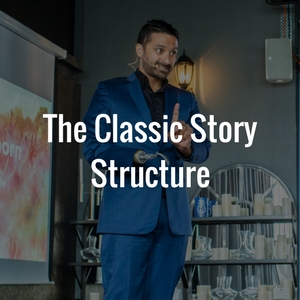
The Classic Story Structure
Stories of all sorts have a structure that follows a pattern with a beginning, middle, and end. These parts fulfill a purpose of getting your ideas across and keeping your listeners engaged all the way through. At the end of the day, the point of sharing your story is to relay an experience, take your audience on a journey and move them to action.
Let’s take a look at some points to consider in understanding how to structure your story:
Beginning
In the beginning, you capture the listener’s attention by introducing them to the setting, the characters and the quest. The mood and tone are also set at the beginning, and should be consistent throughout the story.
To begin your story, consider including some of the following information:
– How can I show how my life was before the crisis; that is, before the life-defining moment?
– How can I go into more detail about how things were before the life-defining moment: before the crisis?
– What are the threads in my ‘setup’ that the audience and I might have in common?
Middle
In the Middle, the story develops through a series of highs and lows, each leading to a crisis which increases the tension. This part holds the listener’s attention as you reach the climax or turning point of the story. It is where the characters change and grow as they deal with the conflicts they face.
You can show the moment of crisis by:
– Describing in detail the day or the time right before the moment of impact: the time of the crisis.
– Dramatising the moment
– Allowing the audience to catch your experience, your feelings — your story.
End
In the End, the Climax and the loose ends of the story are resolved during the Resolution. A good ending will leave the listener’s satisfied and keep them thinking about the story, long after it is finished. The end of your story must also give your audience a call to action.
Consider these ideas when preparing your ending:
– What was the key learning outcome of this moment that you want to share with your audience?
– Make your learning clear for the audience so they can respond to it.
– Give the audience a challenge
Creating good story structure means balancing your story’s beginning, middle and end. When sharing your experiences, it is vital to move smoothly through each part. Envision yourself being back in the moment where it all happened and allow yourself to be vulnerable. This will help you develop meaningful connections with your listeners and create an unforgettable message that inspires.
